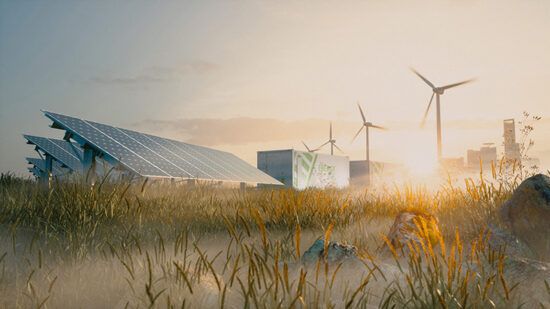Russia’s invasion of Ukraine has given new impetus to Europe’s ambition of achieving ‘strategic sovereignty’, including – crucially – weaning itself off Russian energy.
The green transition has become a focal point to not only deliver the region’s climate objectives, but also increase its energy self-sufficiency. This will not happen overnight, and the path to net zero will evolve over the coming decades – likely accelerated by the recent conflict.
During the transition to net zero, there are likely consequences for euro area inflation and implications for monetary policy. Put simply, the physical effects of climate change and climate mitigation strategies will further challenge the job of achieving price stability.
Expect elevated inflation volatility
Extreme weather events are becoming more frequent and intense, which is affecting prices across several channels – such as food, energy and supply chains. This results in more volatile inflation.
Research from the European Central Bank (ECB) finds exceptionally hot summers can add approximately 1.5 percentage points (pp) of food price inflation in emerging economies within the quarter. While it has not found a significant impact for developed economies, one could reasonably extrapolate developments in emerging markets as a harbinger of things to come in developed markets. The ECB’s results suggest a 0.3 pp increase in euro area inflation, given its smaller share of food in the region’s consumption basket.
Climate-related spikes in wholesale energy prices could also contribute to increased inflation volatility. When exceptionally cold weather hit Europe in January 2017, gas demand rose 20% compared to a year earlier, and headline eurozone inflation rose 0.6 pp. The recent experience of low energy stores in Europe and escalating tensions with Russia offers a sharp reminder of the sensitivity of headline inflation to large and sudden moves in energy prices. Additionally, extreme weather events can lead to temporarily damaged infrastructure and trigger short-term bottlenecks.
Offsetting higher energy inflation
While energy’s contribution to euro area headline inflation has declined over the last two decades, this trend is likely to reverse now governments have started charging for emissions. Estimates suggest carbon prices will need to increase significantly to achieve carbon-reduction targets. Energy makes up a relatively large share of the consumption basket, so higher energy costs would materially boost inflation.
Our analysis shows an increase in the EU’s Emissions Trading System (ETS) CO2 price by €10/tonne increases energy price inflation by 0.3 pp in the following month. Over the past year, the ETS price of CO2 has increased by around €50/tonne, so this effect may have contributed as much as 1.5 pp to energy inflation. If fully passed through, this would have raised headline inflation by 0.15 pp, as energy makes up approximately 10% of the consumption basket.
If governments were to reduce CO2 allowances or expand the programme, inflation could be even higher. In this scenario, the ECB would face a challenging trade-off: to offset higher energy inflation and deliver price stability, it would need to constrain domestically generated inflation.
Uncertainty could depress risk-taking
In the long run, the green transition should stimulate innovation and growth. Central banks would welcome such a development, because weak growth since the global financial crisis limited the scope to cut interest rates. As a result, they relied on unconventional policies.
However, during the transition period, increased public debt to finance the green transition could crowd out private investment. Increased uncertainty, due to the physical effects of climate change or uncertainty over regulation, could further depress investment. The physical and transition effects of climate change could also make large parts of the existing capital stock obsolete, pushing down on productivity and growth.
Increased volatility and uncertainty could also affect the ability of households and businesses to plan. This could lead to suboptimal savings and investment decisions. More generally, an uncertain and volatile environment could depress risk-taking, as investors seeks safe-haven assets – further dampening growth and real interest rates. Low real rates pose a well-known challenge for policymakers. They increase the likelihood the central bank finds itself at the zero lower bound, where it has limited firepower.
Central bank credibility at risk
More volatile food and energy prices, and supply chain disruptions, could make it harder for the ECB to recognise underlying inflationary trends and complicate its job of stabilising the economy. Frequent and large deviations from the inflation target could also chip away at credibility. As a result, policymakers might place greater emphasis on core inflation measures, as we saw during the pandemic.
A larger contribution from energy prices would, all else being equal, raise headline inflation. The ECB would then be in the unenviable position of having to set policy tighter to offset higher energy price inflation. This could come at a heavy economic cost during the transition period. The alternative would be to tolerate above-target inflation for a period of time, which again, potentially undermines the central bank’s credibility.
Higher inflation and uncertainty due to climate change exacerbate the existing backdrop, as economies emerge from the pandemic and decouple from Russia. In such an environment, investors are likely to demand greater risk premia.








